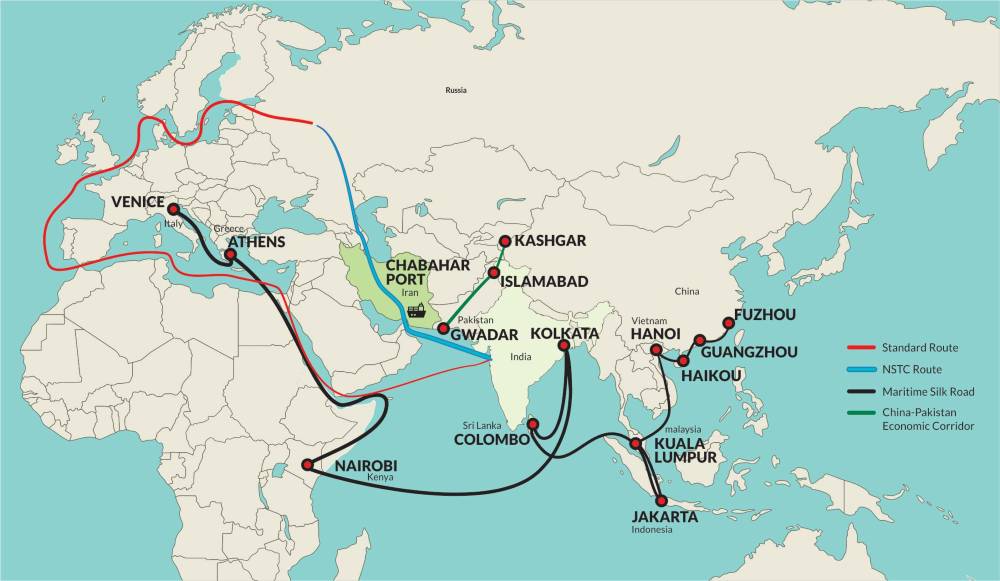Trade between India and Iran has dropped by 88 percent in the last five years after the U.S. imposed sanctions in 2019.
India imported $0.46 billion worth of goods from Iran in the Financial year (FY) 2021-22, a 96 percent decrease from FY 2018-19, according to the Department of Commerce of India. The major imports from Iran included almonds, inorganic/organic chemicals, liquefied butane and propane, bitumen and dry dates. India was the major buyer of Iranian oil before the U.S. introduced sanctions in 2019 after opting out of the Nuclear trade deal.
In 2020 after the U.S. imposed sanctions, mineral products comprised11 percent of total Iranian imports, whereas, in 2019, crude petroleum comprised 83 percent of these imports. According to Orf online, Iran is no longer in the top 20 oil exporting countries to India. Referring to an article in Marine Insight, Arushi Mittal, a certified international trade expert said, “For several years, India has been importing crude oil from Iran and Saudi Arabia, which serves as the raw material for diesel and petrol.”
Iraq and Saudi Arabia were the top oil exporting countries to India in 2020 – 21. Since the start of Russia-Ukraine war in Feb 2022, Russia has become the top exporter of oil to India for the second half of 2022.
However, trade has been gaining ground this year as total trade increased by 60 percent between both countries as compared to the corresponding figure of the previous year. According to Tehran Times, exports from Iran to India increased by 60 percent in 2022. The exports majorly consisted of petroleum products.
India-Iran relations are steadily improving in terms of regional connectivity and energy security said Dr Karamala Areesh Kumar, Assistant Professor, International Relations, Peace and Public Policy. “India’s relationship with US and Israel, and Iran’s close ties with China are some challenges to the bilateral relations. India has always exercised strategic autonomy in its foreign relations, so New Delhi is adept in balancing its ties with both US and Iran,” he added.
As far as India’s exports to Iran are concerned, India exports rice, tea, sugar, fresh fruits, drugs/pharmaceuticals, soft drinks, industrial machinery, and boneless bovine meat to Iran. In 2020, Rice and raw sugar comprised 55 percent of exports to Iran.
The last three years had seen steep declines, as Trump-era US Sanctions had kicked in and was not withdrawn by the Biden administration, all of which still kept Iran relatively isolated, said Dattesh D. Prabhu Parulekar, Asst. professor, School of International and area studies, Goa University, and an editorial Board Member for Lawinter Review, New York.
Keshav Verma, a PhD scholar in International Studies said, “India and Iran have a long history of trading, and they have signed a number of trade agreements to enhance commerce.” In recent years, India and Iran have signed a number of trade agreements, including a Preferential Trade Agreement (PTA) and a Bilateral Investment Treaty (BIT), which has contributed to a rise in Iran’s exports, he added.
Verma said India and Iran have had a long history of cultural and economic relations reaching back to antiquity. “In recent years, the two nations have tried to enhance their partnership by increasing their diplomatic and economic interaction,” added Sharma. In 2016, Indian Prime Minister Narendra Modi travelled to Iran and inked a number of agreements to increase bilateral trade and investment. Infrastructure initiatives, such as the building of the Chabahar Port would give India access to Afghanistan and Central Asia via sea.
The easy transportation of crude oil from Iran through established and less security-impacted shipping lanes was attractive. Besides, Iran under pressure had been ready to trade with India, in rupees, and this payment clearance arrangement was welcomed by New Delhi, at a time when US payment gateways were troublesome, said Parulekar.
Parulekar also said, ever since India pitched for Chabahar, it was not only the port berthing facilities it was looking for, but also to develop the Chabahar Port Zone facility with a focus on petrochemicals refining and fertiliser production. “That remains a sound anchor for persisting India-Iran trade ties since Indian reliance on imported fertiliser is bound to continue for some time despite the best efforts of the Modi government at instilling Atma-Nirbharta in this regard,” he added.
Role of the U.S
India has had to tread a tightrope in its relations with the US regarding Iran. India scored a major victory when Donald Trump imposed sanctions on Iran and India was able to obtain specific exemptions from the US for the Chabahar port project, even though the trade in crude oil came to a halt. Now after initial Indian hope that Biden would return to the Joint Comprehensive Plan of Action (JCPOA), it’s evident that negotiations have stalled as Russia is not willing to negotiate any agreement unless its interests are safeguarded. So, the JCPOA is being rendered a non-starter, said Parulekar.

Keshav said, India’s imports with Iran had been a source of friction in its ties with the United States, but it had not seriously harmed their larger strategic alliance. “Both nations have kept up their dialogue with one another on a variety of topics, like military cooperation, anti-terrorism, and regional stability,” he said.
According to him the U.S. had stepped back and taken in the larger picture. “India is the sixth biggest economy, shares democratic principles, and has a well-equipped military, making it an important partner for the United States in supporting a free, open, and rules-based Indo-Pacific region and combating China’s aggressive moves in the area.” He added that it is a win-win situation for U.S. to partner with India in order to fight China, since the Indian Ocean serves as a major maritime route for international commerce and, in particular, energy supply..

According to Parulekar, India should talk to Washington about cutting off Iran completely as isolating Iran would only increase its disruptive actions.
Future ahead:
Iran’s ambassador to India, Ali Chegeni in an interview with Financial Express Online said that both countries were trying to diversify the channels of payments to expand bilateral trade.
“We want to develop our economic and trade relations beyond energy and petrochemical products because, due to the complementarity of Iran and India’s economies, an extensive range of non-oil trade exists between the two sides including trade on goods and services, investment, tourism, education, and … which may pave the way for multiplying our economic relations ten times more than current relations in mid and long terms”, he said in the interview.
“It is tough to see the trajectory of Indian imports from Iran increasing unless Iranian ties with the US and the wider West stabilise and move towards normalisation. India has widened its West Asian engagement and is pushing through more attractive propositions such as the Trade agreement with the UAE and prospects of a deal with the GCC,” said Parulekar.
He said while India would be keen to keep the Iranian track commercially stable to not draw Tehran’s ire, whether it would prioritise a country whose economy is deep in sanctions over other economies is debatable.



